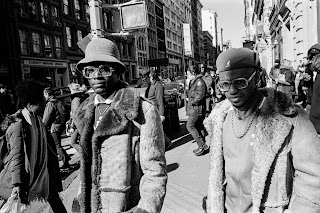people watching and street photography V.
In his essay The Painter of Modern Life (1863), Charles Baudelaire talks about what an artist should be and what a 'man of crowd' is. Baudelaire says that an artist must be "the spiritual citizen of the universe" with an intense curiosity and interest in crowds. He uses the example of an anonymous "Monsieur G." (the painter) whom he claims possesses all of the necessary qualities of a modern artist and says that Monsieur G. is not an artist but rather is a man of the world.
“By ‘man of the world’, I mean a man of the whole
world, a man who understands the world and the mysterious and legitimate
reasons behind all its customs; by ‘artist’, I mean a specialist, a man tied to
his palette like a serf to the soil.”
In the article The Flâneur and the Aesthetic Appropriation
of Urban Culture in Mid-19th-century Paris, Mary Gluck talks about the artist-flâneur
who represents the prototype of the contemporary flâneur and why Baudelaire
regards him as the charismatic embodiment of the ‘painter of modern life’ and alter
ego for the avant-garde artist.
The article says: Flâneur of the 1840s was hardly an isolated and
silent spectator of urban life. On the contrary, he was a sociable presence on
the streets of Paris, most frequently depicted in the role of an amiable storyteller, who happily shares his knowledge of the city with whoever approaches him. By the
late 1850s, a new version of the flâneur and a new definition of flânerie
re-emerged in the guise of the avant-garde artist. The ‘painter of modern
life’, as Baudelaire called this resurrected flâneur, reaffirmed the
idea of modernity as epic experience anchored in a hidden unity at the core of
a fragmented civilization.


Comments
Post a Comment